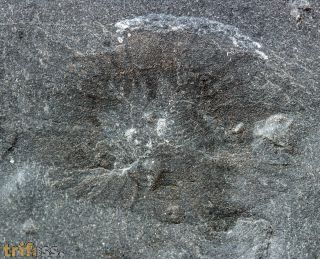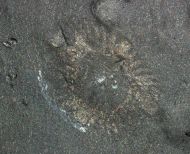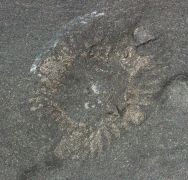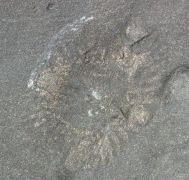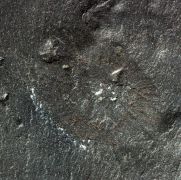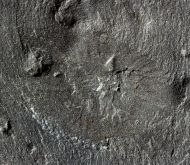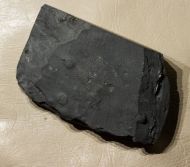This is a rare Anomalocaris fossil of the species Peytoia nathorsti from the Cambrian of Utah.
This fossil shows a the Oral Disk Peytoia. Or more precisely the circular jaw section of the oral cone from a speciemen of the species Peytoia nathorsti.
The species Peytoia nathorsti is based on an isolated jaw disc like this one from the Burgess Shale. However, this fossil was initially interpreted as a fossil jellyfish. In the same publication from 1911, Walcott also described a poorly preserved body of Peytoia nathorsti as a fossil sea cucumber (Holothuroidea) under the species Laggania cambria.
At this point, Peytoia's taxonomy is actually already complicated. Since both taxa were set up at the time in the same article, the taxon described earlier in that article would have preference.
In this case, Laggania cambria would have been prioritized over Peytoia. The genus Laggania is descried on page 52 in Walcott, 1911. The genus Peytoia is later described on page 55.
The alleged holothuria (sea cucumber) was in the year 1978 revised as an accidental combination of a sponge of the species Corallia undulata with a "Peytoia" jellyfish by Conway Morris. He correctly recognized the supposed gullet ring of the sea cucumber correctly as Peytoia.
Morris thereby invalidated Laggania cambria Walcott, 1911. As a result, Laggania cambria had become a synonym for Peytoia nathorsti. Further finds of Peytoia from Utah. were already described in 1982 by Conway Morris & Robison.
At this time, no articulated specimens were known or recognized as such. Anomalocaris itself was only found as an isolated gripper arm and described as an unusual “shrimp” by Whiteaves in 1892.
In the year 1985 Anomalocaris was finally described and reconstructed as a complete by Whittington & Briggs. At that time, only species of Anomalocarids were known. All other genera were treated as synonyms of Anomalocaris. Today it is known that the group of Anomalocarid like Arthropods is significantly more diverse than expected.
Only from Utah are Pahvantia hastata Robison & Richards 1981 and Hurdia sp. mentioned.
Due to the ever more diverse finds of Anomalocarisar's affine atropods, this group is moving into the spotlight of research again.
This group is now placed in the class Dinocaridida Collins, 1996. Popular members of the class include Schinderhannes from Devonian von Bundenbach and the genus Aegirocassis from Ordovician of Morocco.
The third turning point in the Peytoia taxonomig history occurred in 2012. Dakey and Bergström compare the disc-shaped jaws of Anomalocaris and Peytoia and can show clear differences. The gullet opening of Peytoia and Hurdia is shaped square like. Whereas Anomalocaris shows a triangular mouth opening.
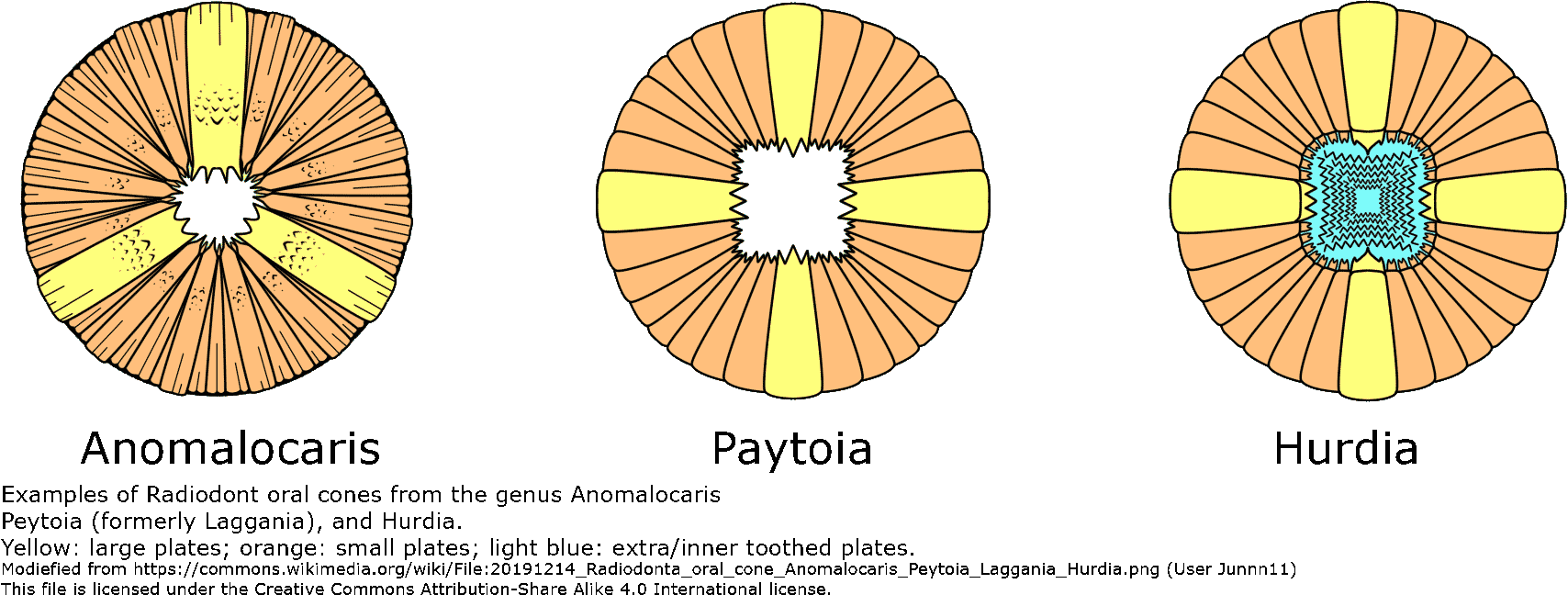
Anomalocarids were certainly one of the most fragile predators in the early and middle Cambrian period. Anomalocaris is also the icon of the Cambrian explosion.
Hardly any species represents the varied history of research into Anomalocaris and Dinocaridida like Peytoia nathorsti.
This specimen from Peytoia nathorsti shows a very good condition for the Wheeler Shale from Utah. Of course, this location cannot keep up with the famous Burgess Shale when it comes to soft-body conservation.
The fossil itself measures about 20 mm.
It is an absolute rarity from the middle Cambrian of Utah with a extremely complex taxonomic History. |
